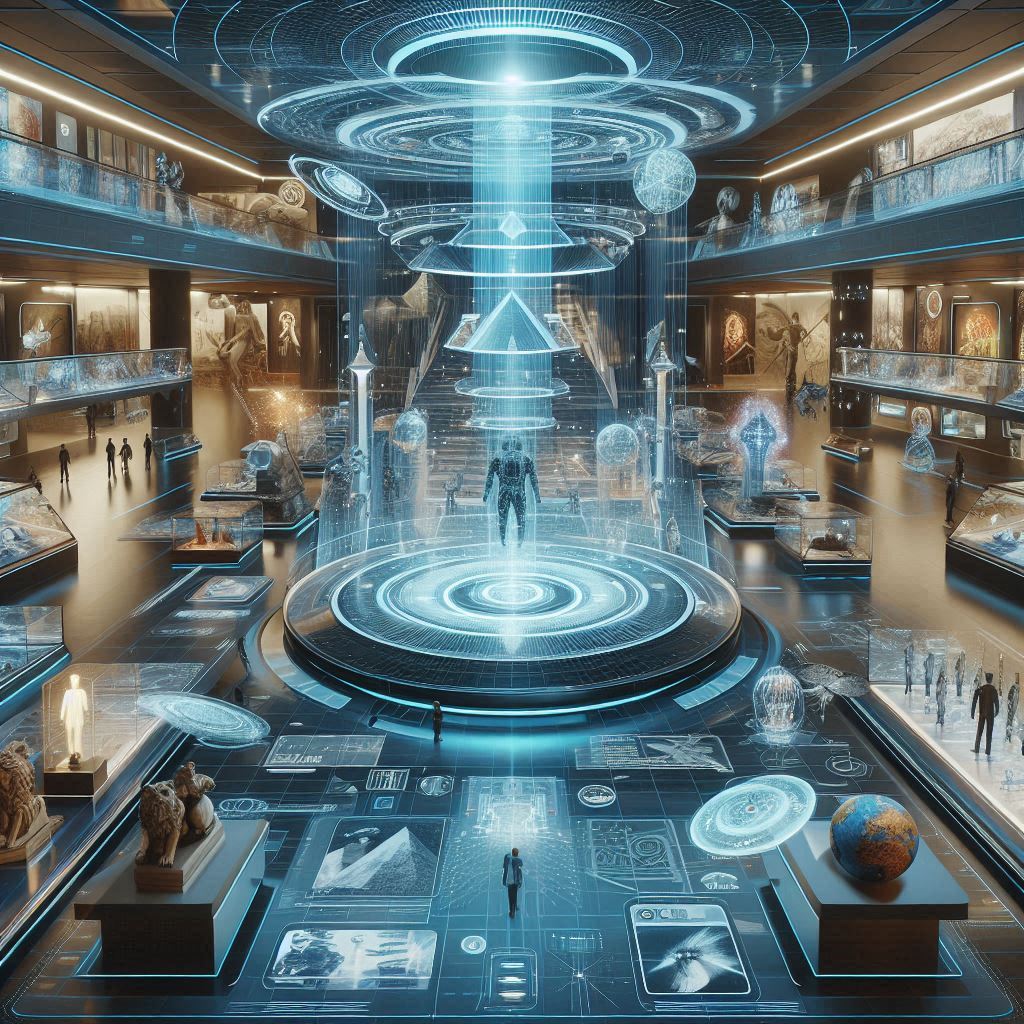
Virtual museums have become an indispensable tool for modern education, offering seamless access to art, history, and cultural heritage. These virtual experiences have multiple benefits, particularly in enhancing art education and history exploration for students. The significance lies in their widespread accessibility, diverse educational content, and interactive features.
Virtual museum tours democratize access to cultural institutions around the globe. Students, regardless of geographic locations or economic backgrounds, can engage in comprehensive art education and history exploration. Traditional museums, though invaluable, restrict access due to location, cost, and physical limitations. Virtual museums eliminate these barriers, making cultural heritage accessible to all.
For instance, a virtual tour of The Louvre, a prestigious museum in Paris, offers high-resolution images and detailed descriptions of exhibits. This accessibility empowers students from any part of the world to appreciate the rich tapestry of human culture without incurring travel expenses.
Rich Educational Content
Virtual museums provide a wealth of educational resources tailored to diverse learning needs. These platforms often include detailed exhibit descriptions, historical context, and interactive features that encourage deeper understanding. Students can analyze Renaissance paintings, delve into ancient Egyptian history, or explore contemporary art movements, all through the convenience of their screens.
Art education is notably enhanced by virtual tours. The ability to zoom in on artworks allows students to observe minute details and techniques that might be missed in a physical setting. Museums like The Metropolitan Museum of Art offer virtual exhibits with curated content, including artist biographies and contextual essays, enriching the learning experience.
Interactive Engagement
Interactivity is a cornerstone of virtual museum tours, fostering an engaging learning environment. Many virtual museums offer features such as 360-degree views, video walkthroughs, and interactive quizzes. These elements can transform passive observation into active exploration, making educational content more memorable and impactful.
For example, the British Museum’s virtual tours include interactive maps and multimedia displays. Students can click on specific artifacts to access detailed information, watch explanatory videos, and even partake in virtual scavenger hunts. Such interactivity ensures that learners remain engaged and motivated throughout their educational journey.
Cross-Disciplinary Learning
Virtual museums promote cross-disciplinary learning by combining art education with history exploration and cultural heritage studies. Exhibits often encompass various subjects, from archaeology and anthropology to literature and science, providing a holistic educational experience. This interdisciplinary approach helps students draw connections between different fields, fostering critical thinking and deeper comprehension.
The Smithsonian Institution exemplifies this with its vast array of virtual exhibits. Students can explore topics ranging from ancient civilizations to modern science, connecting historical events and cultural developments with scientific advancements. Such comprehensive content enriches the educational value of virtual museum tours.
Customizable Learning Paths
One of the primary benefits of virtual museums is the ability to customize learning paths according to individual interests and educational goals. Students can choose specific exhibits, themes, or periods to study in-depth, tailoring their virtual tours to their academic needs and personal preferences. This flexibility promotes self-directed learning and empowers students to take control of their education.
For instance, a student interested in medieval art can focus on virtual tours of relevant museum collections, such as the National Gallery’s medieval wing, while another student fascinated by African history can explore exhibits dedicated to African art and culture. Virtual museums cater to diverse interests, making education more personalized and engaging.
Global Perspectives
Virtual museum tours offer a unique opportunity to gain global perspectives on art, history, and cultural heritage. By accessing collections from various countries, students can appreciate the diversity of human expression and cultural practices. This exposure broadens their understanding of the world and fosters a sense of interconnectedness.
For example, Google’s Arts & Culture platform provides virtual tours of museums across continents, from the Australian National Maritime Museum to the National Museum of Korea. These tours allow students to explore global cultures, compare artistic styles, and understand historical narratives from different regions, enhancing their global awareness.
Collaborative Learning
Virtual museums also facilitate collaborative learning experiences. Many platforms offer features that enable group exploration, discussions, and projects. Teachers can organize virtual field trips, assign group activities, and encourage students to share their insights and reflections. This collaborative approach fosters teamwork, communication skills, and collective problem-solving.
For instance, a classroom of students can virtually visit the Museum of Modern Art (MoMA) and participate in group discussions about contemporary artworks. They can collaborate on projects analyzing artistic movements, create presentations, and share their findings with peers. Virtual museum tours thus become a dynamic and interactive classroom tool.
Technological Integration
The integration of virtual museums into educational curricula leverages modern technology to enhance learning experiences. Tools such as virtual reality (VR) headsets, augmented reality (AR) applications, and interactive touchscreens bring digital exhibits to life, providing immersive and multisensory experiences.
Educational institutions can incorporate these technologies into their teaching methods. For example, VR headsets can transport students to ancient Rome, where they can virtually walk through ruins and explore artifacts in their original context. Such immersive experiences deepen students’ understanding and retention of historical and cultural knowledge.
Continuous Learning Opportunities
Virtual museum tours provide continuous learning opportunities, transcending the limitations of traditional classroom settings. Students can access virtual exhibits anytime, anywhere, allowing for self-paced learning and revision. This flexibility ensures that education is not confined to a specific time or place, promoting lifelong learning.
For instance, a student preparing for an exam on Renaissance art can revisit virtual tour material, re-examine artworks, and review contextual information at their convenience. This continuous access supports effective study habits and reinforces learning outcomes.
